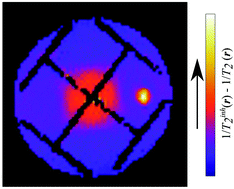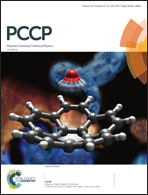Susceptibility contrast by echo shifting in spatially encoded single-scan MRI
Abstract
To overcome the effects of static field inhomogeneities, single-scan hybrid imaging techniques that use k-space encoding in one direction and spatial encoding in the other have been shown to be superior to traditional imaging techniques based on full k-space encoding. Like traditional imaging methods, hybrid methods can be implemented in different ways that favor different sources of contrast. So far, little attention appears to have been paid to these aspects. By modifying an established hybrid imaging sequence called Rapid Acquisition by Sequential Excitation and Refocusing (RASER) so as to obtain Echo-Shifted RASER sequences, we show that by shifting spin echoes one can tune the contrast due to inhomogeneous Tinh2 decay.

- This article is part of the themed collection: 2017 PCCP HOT Articles


 Please wait while we load your content...
Please wait while we load your content...